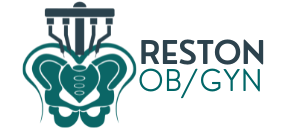Hysterectomy
A Hysterectomy is a gynecological procedure that usually entails removing the entire uterus, including the cervix.
There are different types of hysterectomies: Supracervical Hysterectomy, which entails removing the uterus while leaving the cervix in place, and Total Hysterectomy, which entails removing the uterus along with the cervix.
The term Hysterectomy, whether total or supracervical, is only specific to surgery on the uterus and does not include removal of the ovaries.
Removing the ovaries and the uterus is not recommended in patients under 65 years old unless indicated by your doctor. Removing the ovaries with a Hysterectomy is referred to as Oopherectomy.
It is also recommended at the time of Hysterectomy to remove the fallopian tubes. Studies have shown that removing the fallopian tubes during a Hysterectomy can decrease the risk of future cancer of the ovaries and fallopian tubes by 30%.
Hysterectomies are performed to relieve the following conditions:
- Adenomyosis
- As part of pelvic prolapse repair
- Heavy bleeding, with or without Fibroids
- Pelvic pain with origin in the uterus
- Painful intercourse with origin in the uterus

At Reston OBGYN, our preferred method of performing Hysterectomies is through a minimally invasive approach that could be done successfully in almost all cases, irrelevant of the size of the uterus or the complexity of the procedure.
This technique carries lower risks of complications and requires only small incisions, resulting in quicker recovery.
This procedure is ideal as it gives full access to the pelvis, allowing the doctor to evaluate and treat potentially associated conditions, such as endometriosis, scar tissue, and ovarian cysts.
After a Hysterectomy, people can be discharged the same day and return to their full, normal activity in around two weeks (aside from sex).
Sexual intercourse should only be resumed after at least eight weeks and if you feel comfortable.
You might experience the following after a Hysterectomy:
- General pain that should resolve with time
- Pain around the incisions that should last only a few days
- Pelvic and rectal pain and pressure should resolve with time
- Chest and shoulder pain that should resolve within 2 to 3 days
- Bruises at the incisions that will resolve on their own
- Vaginal spotting during the first week
- Nausea caused by anesthesia and pain medication
- Swelling of the abdomen that will resolve over time
- Constipation due to medication
- Diarrhea caused by antibiotics
- Urinary retention due to anesthetics (seek your doctor’s advice if this occurs after you are sent home)
As part of your recovery, you might be given prescription medication to ease the the pain. It is important not to drive when taking any prescribed narcotics. Avoid lifting, swimming, and heavy exercise. Use caution when starting an exercise routine after your procedure, starting slowly and listening to your body to ensure you are comfortable and able.
A Hysterectomy will cause periods to stop. However, hormone production should not be affected if ovaries are spared during the surgery. After a hysterectomy, you cannot conceive, so this procedure is not recommended for people desiring fertility or childbearing.
A Hysterectomy will not cause early menopause unless both ovaries have been removed during the procedure. In this case, Estrogen replacement therapy can prevent menopausal symptoms, such as hot flashes, vaginal dryness, and night sweats. You can discuss this with your doctor based on the procedure you undergo and what is best for your body.
